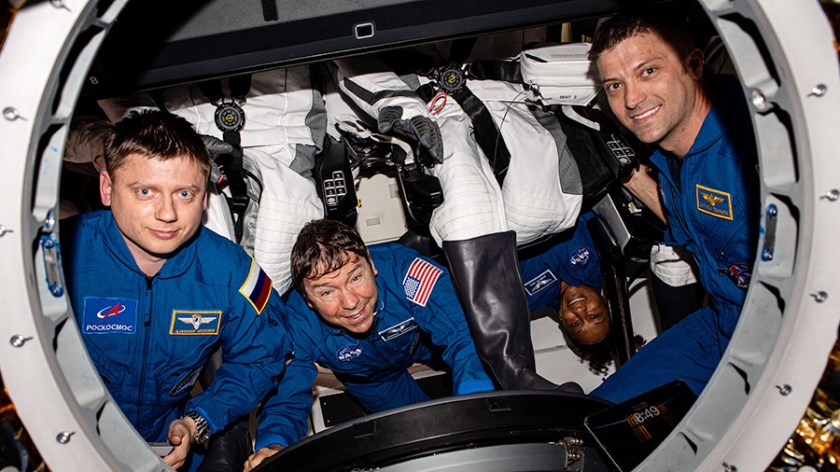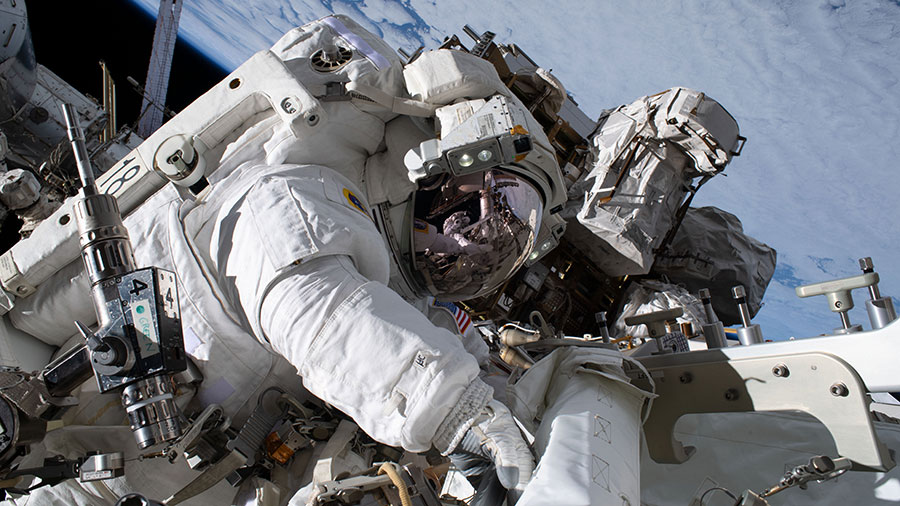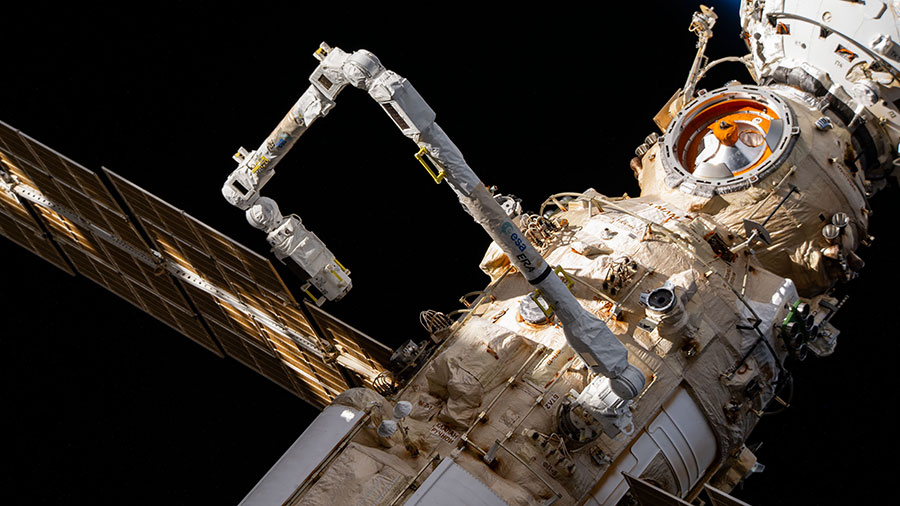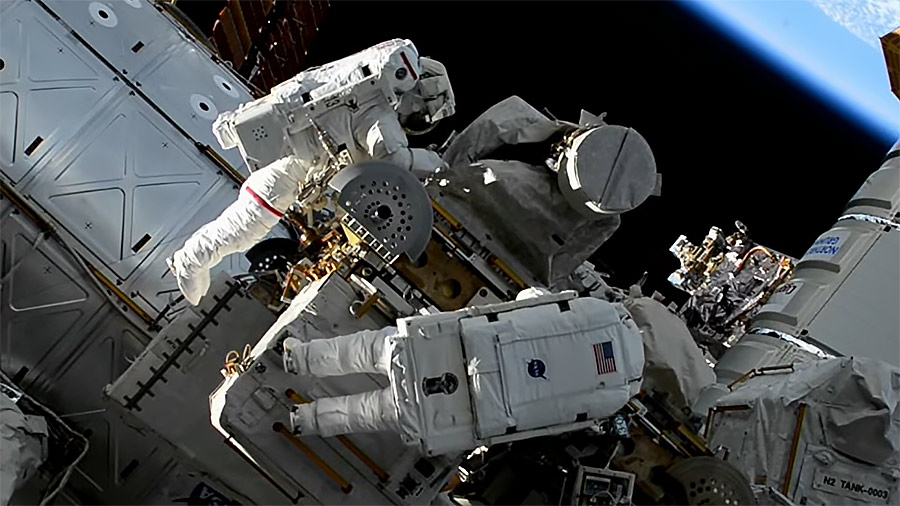
Mission preparations are underway aboard the International Space Station as a spacecraft relocation on Thursday will make room for a crew arrival next week. The Expedition 71 crew spent Wednesday reviewing mission procedures, conducting robotics activities, and connecting with students on Earth.
Four crew members will suit up Thursday, May 2 and enter the SpaceX Dragon spacecraft to relocate it to a new port as the countdown to NASA’s Boeing Crew Flight Test continues. NASA astronauts Mike Barratt, Matthew Dominick, and Jeanette Epps, as well as cosmonaut Alexander Grebenkin of Roscosmos, will undock from the forward port of the Harmony module at 7:45 a.m. EDT and take a short ride aboard Dragon before redocking to the zenith port of Harmony around 8:28 a.m.
The quartet spent Wednesday morning reviewing procedures for Dragon’s relocation and was later joined by NASA astronaut Tracy C. Dyson—who will be monitoring the maneuver—to hold a conference with ground teams. In preparation for the move, Epps also cleaned and inspected the health of Dragon’s capture and docking system, then later reorganized supplies within the spacecraft.
After tomorrow’s relocation, Harmony’s forward port will be available, making room for the arrival of Boeing’s Starliner spacecraft next week. Starliner, scheduled to launch at 10:34 p.m. Monday, May 6, will carry NASA astronauts Butch Wilmore and Suni Williams to the orbiting laboratory, with docking scheduled for around 12:46 a.m. Wednesday, May 8. The duo will spend about a week aboard station to test the Starliner spacecraft and its subsystems before NASA certifies the transportation system for rotational missions to the orbital complex as part of the agency’s Commercial Crew Program.
As the crew arrival nears, Dyson, Dominick, and Barratt held a conference with ground teams in the afternoon to go over Starliner procedures, including rendezvous, docking, and departure.
The orbital septet also scheduled in some time for robotics, space-to-ground operations, and maintenance on Wednesday. Dyson powered on Astrobee, the station’s free-flying robots, and performed a Zero Robotics tech demonstration, which allows students on Earth to write software to control the robots.
Dominick connected with students in North Carolina through an ISS Ham Radio session, answering questions about living and working in space. Meanwhile, Epps recalibrated ethernet cable connections in the crew quarters and Barratt conducted some routine orbital plumbing.
In the Roscosmos segment, station Commander Oleg Kononenko ran an experiment that studies the glow of Earth’s nighttime atmosphere in near-ultraviolet, while Flight Engineer Nikolai Chub investigated the behavior of various liquid phases exposed to different temperatures and vibrations in the microgravity environment.
Learn more about station activities by following the space station blog, @space_station and @ISS_Research on X, as well as the ISS Facebook and ISS Instagram accounts.
Get weekly updates from NASA Johnson Space Center at: https://roundupreads.jsc.nasa.gov/
Get the latest from NASA delivered every week. Subscribe here: www.nasa.gov/subscribe



